100 Years of Flawless Dependability
Industries We Serve
Cultivation
Helping increase your crop yield
We use gases in the cultivation of food every day. Adding certain gases to aquaculture, greenhouse, or grow facilities can boost production considerably. A different variety of gases are also used after harvest for ripening or storage. In addition to supplying your gas needs, we provide consultation and equipment for installed systems to provide higher crop yields.
Energy
Powering the energy industry one gas at a time
Constantly evolving, today's energy facilities require many different kinds of gases, for processes that range from treating water to producing power to extraction. If you need to store gas on site, consult with RMA for the best source design and appropriate system to fit your budget. Available, flexible, and reliable, your business can depend on our delivery.
Food & Beverage
Fresh, fizzy, or frozen - we’re here to serve you
Beverage and food grade gases are utilized in food and beverage storage and production in many ways - adding sparkle to carbonated drinks, cryogenic freezing for freshness, displacing oxygen in packaging, and many more.
Industrial
Providing industrial gas products and services to the Rocky Mountain region for over 90 years
Industrial gases play a large - and largely invisible - part in our daily lives. We deliver accurately and on time to protect your business against interruptions so your work runs smoothly.
Medical
Rocky Mountain Air proudly serves the needs of hospitals, clinics, hyperbaric ward treatment centers, dentists, and all other medical industry needs.
In addition to a full range of gases for therapeutic and surgical applications, Rocky Mountain Air Solutions ® delivers laboratory and sterilant gases. Certified in medical gas management, we consult on the design and installation of bulk medical oxygen storage systems.
Specialty
Whatever your niche, however high your purity needs, we have your specialty gas.
When you require exact purification and need a certification of analysis, RMA provides for you with our new state-of-the-art specialty gas lab. As a PurityPlus™ authorized provider of specialty gases and equipment, we produce gases to your specifications on time, every time.
Our Services >
Providing gas, safety, medical and welding equipment, as well as related services across multiple industries, Rocky Mountain Air applies unparalleled dedication and attention to all we do.
Review our services and give us a call to experience flawless dependability in atmospheric gas distribution today.
Bulk Delivery
Rocky Mountain Air Solutions ® tests, requalifies, refurbishes, and repairs low pressure, high pressure, liquid, and acetylene cylinders.
Cryogenic Installation and Repair Services
We provide repair services for many cryogenic vessels such as liquid tanks, liquid gas transports, liquid cylinders/dewars, home healthcare delivery tanks, and cryopreservation units. Our technicians are certified in medical gas management and other welding processes.
Cylinder Testing & Requalification
Rocky Mountain Air Solutions ® tests, requalifies, refurbishes, and repairs low pressure, high pressure, liquid, and acetylene cylinders.
Fire Extinguisher Requalification and Testing
We perform field and on-site testing, recharging, inspection, and certification of fire extinguishers. We are also happy to provide new and used extinguishers to fit your needs.
Mountain Aire Medical
Mountain Aire Medical specializes in providing the equipment and supplies needed for using medical gases in all medical gas therapy in any healthcare environment across the nation.
Our Featured Products
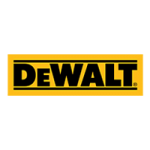


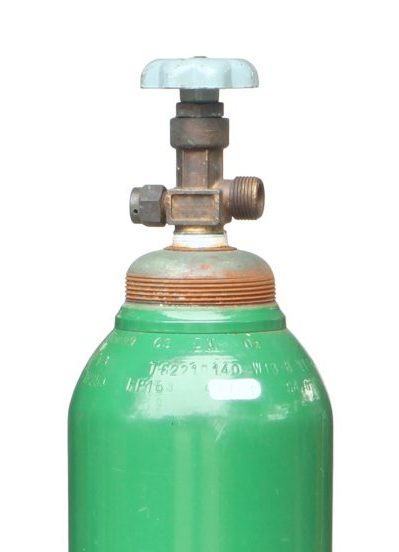
Medical Gases
See more products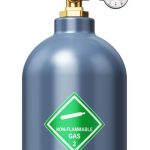
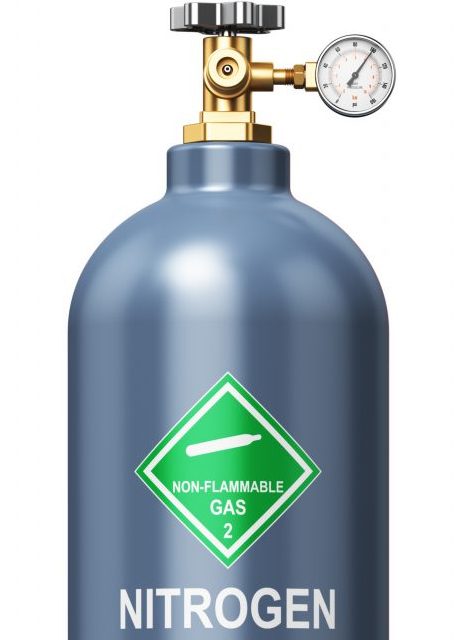
Industrial Gases
See more products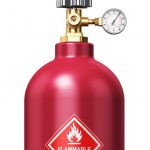
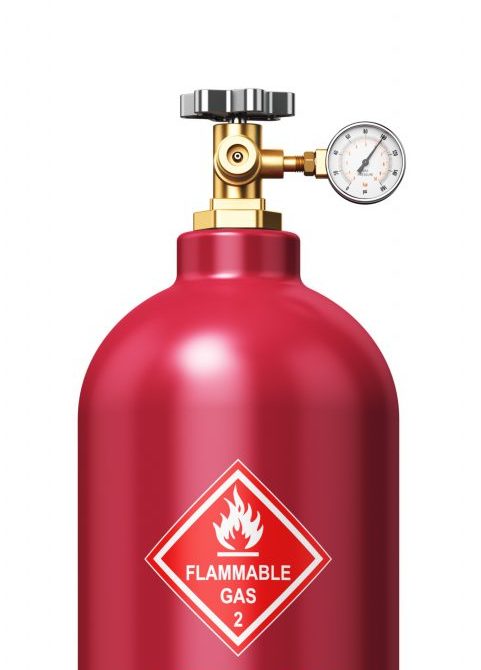


View our Safety Data Sheets
The Gas Guide
Acetylene
Air
Argon
Carbon Dioxide
Dry Ice
Helium
Hydrogen
Mixed Gases
Nitrogen
Nitrous Oxide
Other Gases
Oxygen
Rare Gases
Specialty Gases
C2H2
Acetylene (C₂H₂) has a low moisture content and is the hottest burning flame in Oxyfuel welding, making it one of the most efficient gases to use for various welding and heating applications. These include gouging, hardening, bending, straightening, brazing, cutting, cleaning and more. It improves cut quality, increases cutting speed, and reduces oxygen, thus preventing metals from rusting.
Acetylene’s many uses cross a wide range of industries due to its efficiency. The automotive industry employs acetylene for brazing and low-pressure carburizing. There are also numerous fabricators and glass makers that use acetylene throughout their processes. Interestingly, there are two primary ways that acetylene is manufactured: chemical reactions using calcium carbide and a technique called thermal cracking.
The wet process of a calcium carbide chemical reaction involves adding water to calcium carbide granules, or the granules to water into a chamber. Like flour puffing out of a standing mixer on high-speed, it is important that the chemical reaction does not generate acetylene gas too quickly. This combination creates a solution that is continually stirred with a paddle to initiate a reaction, keeping granules moving so that they do not meet the highly explosive acetylene gas teeming off the top. As temperature is a factor when handling acetylene, it must be consistently monitored due to its explosivity. When water meets calcium carbide, it creates a high heat chemical reaction, which must be quenched and maintained. As acetylene rises like vapor from boiling water, it is cooled with water, leaving the chamber, and entering another.
Acetylene manufactured in this way produces a byproduct called calcium carbonate, also known as “lime.” Rather than ascending like acetylene, lime descends and is held in a separate chamber where water is removed. Lime is a chemical compound implemented in water treatment plants and road construction for asphalt and similar materials. Manufacturing acetylene with calcium carbide and water occurs at normal room temperatures, but thermal cracking cranks up the heat to alter atomic states.
Thermal cracking is a method of acetylene production, which essentially “cracks” the hydrocarbon atom bonds of oil and natural gas, separating and rebinding them to create different materials. This process implements burning, boiling, and diffusing, creating multiple byproducts that must be scrubbed and separated.
To begin the thermal cracking of natural gas atoms, combustion chambers preheat it to 1,200 degrees Fahrenheit. The gas self-ignites and travels through a pipe where oxygen is added. The speed of the process is carefully regulated using a diffuser, keeping the heated natural gas and oxygen mixture from burning and shooting out of the burners toward the end of the pipeline, or from retreating and igniting the gas already within the pipeline. Traveling through various small channels, the gas comes out of a stove-like burner, emitting methane and other gases. Methane can be converted in acetylene when its atomic bonds “crack.” Acetylene, especially at high heats, must be cooled with water to deactivate the probability of combustion.
Acetylene, carbon monoxide, carbon dioxide, methane, and carbon soot are all byproducts of this process and must be separated. A special solvent absorbs only the acetylene while carbon soot is scrubbed out. The solvent-acetylene solution is then boiled, where the acetylene rises and is captured in a tower. In both the chemical reaction and thermal cracking processes, acetylene is packaged in cylinders at 300 psi and dissolved in acetone to retract its ability to explode.
RMA manufactures industrial grade acetylene in our Salt Lake City plant and delivers the acetylene to our customers and several competitor gas suppliers throughout our distribution region. If you use acetylene in our region, it’s likely produced by RMA. Since the distribution and filling process is time intensive and acetylene is an extremely volatile gas, safety is our number one priority. We ensure that the refining process is in the hands of experienced, highly trained, and knowledgeable technicians who perform their work with the highest care for the sake of their own safety and the safety of others. RMA can supply your high purity industrial grade acetylene and atomic absorption grade acetylene and lime , available in multiple cylinder sizes or tanks.
Purchase Acetylene
We have multiple cylinder sizes available individually and in clusters
Air
Compressed air is air that is pressurized and condensed. Just like regular air, compressed air consists mostly of nitrogen, oxygen, and water vapor. Compressed air is useful as a propellant and energy source in areas where it may be difficult or dangerous to source other power or as blowing “active” air. When used as an energy source, compressed air can power tools and production equipment. Tools and equipment powered by compressed air, can be found in various applications across industries such as construction, tire service, mechanical repair, factory production, industrial processes, and vehicle safety systems. Amusement Park rides, such as roller coasters, and ski lifts use air-powered brakes, and hotels use compressed air to control elevators. Active air provides a steady supply of air when needed for tasks such as aeration or for medical use, in which case, it must be clean, dry and contaminant free.
Compressed air has been described as the fourth utility and is a popular energy source because it’s light and easy to move, energy efficient, safe, versatile, and cost-effective. It’s non-combustible and there are no dangerous exhaust fumes or other harmful by-products. Compressed air plays an integral role in the production of cars and is also widely used in the food and beverage industry. Common uses for air in this industry include air knives, product handling, food machines, packaging, and fluid pumps. It accounts for about 10% of the global energy currently used.
There are many types of purities and mixtures available that cater to the varied uses of compressed air. From blowers and dryers to food & beverage processing, we have the years of experience to provide and consult for your needs.
Purchase air
Compressed air for your industry and application
Ar
Argon (Ar) is the most abundant of the seven noble gases and is the third-most abundant gas (at 0.934%) in the Earth’s atmosphere after nitrogen and oxygen. It’s odorless, colorless, nonflammable and is almost completely inert. It does not combine with other elements except under extreme conditions and its nonreactive nature plays a factor in its many uses.
Argon’s lack of reactivity makes it particularly useful in the production of reactive elements and compounds because it establishes an atmosphere devoid of oxygen, minimizing the purity contamination for resulting metals and crystals during oxidation. It is manufactured for industrial uses by the process of fractional distillation, which separates Argon from Oxygen and Nitrogen in their liquid states.
Most used in the metal industry for metal production, processing, and fabrication, it can be used as a pure gas for certain shielding, blanketing, annealing, and hot isostatic pressing applications. It can also be used as part of a mixture with other gases, in particular carbon dioxide, oxygen, nitrogen, hydrogen or helium, depending on the process and material. Argon is used in every day household objects such as incandescent light bulbs and energy efficient windows, and it also plays a very important role as a purge gas in the production of solar panels. Often used as a preservative for both food and historical document preservation, Argon has no impact on the environment and doesn’t harm aquatic life.
Purchase Argon
Get the quantity and purity of Argon gas that you need
CO2
Carbon dioxide (CO₂) is a colorless, odorless gas that naturally occurs in the earth’s atmosphere. It is a dense inert gas that, when combined with argon, is used as a shielding gas in the welding process. Uses for carbon dioxide also include controlling pH levels in paper manufacturing and wastewater treatment and increasing yields in cultivation through the acceleration of natural cycles of photosynthesis.
Greenhouse gas emissions are an environmental concern. Carbon removal initiatives, such as direct air capture, extract carbon dioxide from the air and funnel it to be stored or reused by various industries. Green dry cleaning, with carbon dioxide, is environmentally friendly and replaces toxic cleaning solvents and chemicals like perchloroethylene and chlorine-based mixtures.
In its solid form, carbon dioxide is manufactured into small pellets for dry ice blasting, miraculously blowing away soot, smoke, paint, and excess buildup from coffee roasting machines and commercial kitchen appliances. Dry ice is made when cryogenic carbon dioxide is injected into a holding tank where it can be frozen to its desired temperature of -109 degrees Fahrenheit. Cleaning with carbon dioxide gas applications – both liquid and solid – can, realistically, be an environmentally friendly alternative to cleaning applications that use harsh chemicals that contaminate natural bodies of water through wastewater runoff.
Carbon Dioxide plays a significant role in food preservation and transport. Food distributors use dry ice for transportation, as it turns from solid to gas, without liquifying. This sublimination prevents water and residue from accumulating. These blocks are sanitary, food-grade and FDA approved. Beverage companies rely on it to create bubbles, but also to move product between tanks or to kegs and cans. Carbon Dioxide maintains beverage freshness, taste and color and prevents unwanted oxidation and premature fermentation at breweries and wineries.
Carbon dioxide supplies through RMA are offered in a variety of sizes for a variety of systems.
Purchase Carbon Dioxide
Gas and liquid Carbon Dioxide for pick up or delivery to you
Dry Ice
Dry Ice is simply Carbon Dioxide in its solid form. This clear product leaves no residue behind which offers a distinct advantage during the preservation process. It is used as a safe method of preserving frozen food and preserving biological samples.
Applications of dry ice are extraordinarily varied. Some examples of dry ice usage are: protecting ice sculptures from melting; making ice cream; solidifying oil spills; preventing insect infestations in grains and farm products; industrial blasting; and use in plumbing as a frozen plug for pipe repair.
Purchase Dry Ice
Solid Carbon Dioxide available for a variety of uses
Helium
RMA provides helium (He) for a variety of uses in whatever purity needed. We provide high-pressure gas cylinder and liquid cylinder containers large enough to cool a particle collider or an MRI magnet, and small enough to use for balloons at your next party.
The inert gas can chill temperatures to near absolute zero. Various usages include: pressurizing and leak detection; balloon inflation; fiber optics; and glass production. Helium, however, is more than balloons, but operates within medical, technology, manufacturing, and aerospace industries. Helium is often mixed with other gases, like oxygen, in treatments for respiratory ailments like asthma and emphysema, and breathing cylinders for deep sea dives.
Where is helium found and how is it harvested? Helium is a component of natural gas production and is found within subterranean reserves in places rich in oil like Wyoming, Algeria, Qatar, and Russia. As a non-renewable resource, the helium market frequently undergoes global shortages that disrupt its essential industry applications. Partnering with a helium supplier like RMA can ensure that you have the supplies of helium gas that you need when you need it. Our dedication to flawless dependability prioritizes our partners when shortages arise.
Purchase Helium
We can provide the quantities you need, when you need it.
The lightest element in the periodic table, hydrogen (H), is used for weather balloons, processing petroleum products, glass production, and heat-treating furnaces for steel production. As a highly flammable gas, Hydrogen is commonly used in a variety of chemical processes, such as hydrogen fuel cells to power cars and in fuel celled forklifts. Hydrogen’s popularity is increasing because it’s reliable, versatile, and can be produced in a variety of ways.
Hydrogen has only one proton and one electron, making it the simplest element and is considered a clean and renewable resource. It’s not toxic to human health, as no harmful byproducts are released into the atmosphere.
Hydrogen comes in a variety of “colors.” What this means exactly, is that hydrogen manufacturing methods of separating hydrogen from various compounds (water, ammonia, methane, etc.), and the emissions that result thereafter, are labeled as three main color distinctions: brown, green, and blue.
Brown hydrogen – which comprises 95% of hydrogen production – is the byproduct of fossil fuels. Steam reforming and gasification is the separation of hydrogen atoms from carbon atoms in either natural gas or coal production. During this process of gasification, carbon dioxide emissions are high.
Electrolysis is the process in which an electrical current is used to split water molecules into hydrogen and oxygen. When hydrogen is harvested, only oxygen is left over. The lack of Co2 emissions makes this production method green.
Blue hydrogen is the capture and storage of hydrogen during steam methane reformation, which causes some, but reduced, carbon dioxide emissions.
Purchase Hydrogen
Liquid or compressed Hydrogen gas available in various concentrations and purities
Mixed gases are a wide and diverse group of products developed for use in specific industries for customized applications. A gas mixture is defined in a molar gas fraction, by percentage, parts per thousand or parts per million. Though gas mixtures are used in many industries, these are common applications in the medical, food and beverage, and welding industries.
Purchase Mixed Gases
Gas blends tailored for your needs and industry
Nitrogen (N), a colorless, odorless, tasteless gas, is the most common element in our atmosphere at 78%. It’s a component of all living matter, including water, soil, plants, and the human body. It accounts for about 3% of human body weight. Nitrogen has many useful applications in both its gas and liquid forms. One fun fact about nitrogen is that it’s responsible for the Aurora Borealis or Northern Lights’ purple color! When solar wind stimulates nitrogen atoms, the result is the purple and blue-colored lights emitted when the atoms decay.
Nitrogen is unique in that it can be used to prevent fires, but is also used to make explosives. In its natural state, Nitrogen is inert. However, if isolated or harnessed (as in the case of making explosives), it can release a large amount of energy. On the other hand, Nitrogen fights potential fire hazards by eliminating one point in the fire triangle. As a purging gas, its inert nature is denser than oxygen. By removing oxygen, with only heat and fuel remaining, nitrogen eliminates fire’s ability to ignite and thrive.
Rocky Mountain Air is a certified distributor of high purity nitrogen. Specialty gas impurities are analyzed with advanced equipment – the most common being gas chromatographs ¬– at our Salt Lake City plant in concordance with our PurityPlus specialty gas partnership. PurityPlus partnerships certify that we are selling the highest-grade product, and that products will be delivered whenever you need them. This partnership aligns directly with Rocky Mountain Air’s promise to deliver flawless dependability to our customers. Contact your local branch to learn more about PurityPlus specialty gases, or to order a certified mixture today.
Purchase Nitrogen
Nitrogen available in gas, liquid and bulk form, ready for delivery
Nitrous Oxide (N₂O), also known as laughing gas, is composed of two molecules of nitrogen and one molecule of oxygen. It’s odorless and colorless with a slight metallic or sometimes, sweet taste. It has significant use in the medical and dental industries due to its analgesic and anesthetic properties. Uses include general anesthesia, procedural sedation, dental anesthesia, and treatment of severe pain. Nitrous Oxide was first discovered in 1772 by the English scientist, Joseph Priestly, and has been used for more than 150 years. The gas is administered via inhalation by utilizing a face mask, laryngeal mask airway, or an endotracheal tube.
Nitrous oxide affects the body in three ways. First, the anti-anxiety effect, which is caused by GABAA receptors that block neurotransmitters. Second, it has an analgesic (pain-reducing) effect when the brain releases norepinephrine that inhibits pain signaling throughout the body. Lastly, nitrous oxide has a euphoric effect due to increased stimulation of the reward pathway in the brain that releases dopamine. After a procedure, the patient is given pure oxygen to completely flush out any remaining nitrous oxide from their system. Patients should soon return to their normal state.
Since nitrous oxide is approved as a food additive, it’s used for whipped cream and cooking spray cans and as a food or beverage ingredient. Nitrous oxide is also used as a propellant. In vehicle racing, nitrous oxide (often called nitrous) allows the engine to burn more fuel by providing more oxygen during combustion, producing greater power. Nitrous is also used in rocket propulsion due to its oxidizing effect at high temperatures. It has advantages over other oxidizers because it is less toxic, stable at room temperatures, and is easy to store on a flight.
There are many other gases that Rocky Mountain Air manufactures and sells in addition to the elemental, rare, and specialty offerings listed. Butane (C₄H₁₀), Chlorine (Cl), Ethylene (C₂H₄), and Ammonia (NH₃) are just a few of the products that we stock and create for our customers.
Purchase Other Gases
Contact us today to discuss your needs and develop a delivery plan that works for you! We can provide the quantities you need when you need them.
A requirement for most life on earth, oxygen (O) is one of our atmosphere’s most plentiful elements. A particularly reactive gas, oxygen easily binds to a large variety of elements and compounds to form oxides, requiring inert gases to displace it or prevent contact with surfaces and other gases.
Oxygen’s usefulness stretches across a wide range of industries. In hospitals, clinics, and other health and homecare practices, oxygen is used in resuscitation, surgery, and a variety of therapies to promote better quality of life. Humans aren’t the only ones who benefit from oxygen – fish hatcheries, zoo animals, and animal clinics all utilize this diverse gas to mimic natural habitats, growth, and recovery. In a radically different use, the industrial environment uses oxygen for its combustion properties – making flames hotter and the cutting and braising of metal easier and more efficient.
To better serve your needs, RMA sells oxygen at a variety of purity levels and with a variety of systems. Sold in various sizes of bulk cryogenic oxygen tanks or high-pressure oxygen cylinders, liquid levels are monitored remotely while trucks are deployed when levels begin lowering, and you can rely on a consistent schedule of refills of cryogenic oxygen tanks to ensure your oxygen supplies remain abundant.
Purchase Oxygen
Liquid, gaseous, and bulk oxygen for medical, cryogenic, and other needs
Neon (Ne), Krypton (Kr) and Xenon (Xe) are referred to as the rare gases, as they comprise a minimal amount of the earth’s atmosphere. These rare gases are produced in the same cryogenic separation and purification process that produces oxygen, nitrogen, and argon but in much smaller quantities. Each of the rare gases was discovered by Scottish and English chemists, Sir William Ramsay and Morris Travers in 1898, filling in the inert gases on the periodic table. Of these rare gases, xenon is the rarest, found in the earth’s atmosphere at only 1 part per 20 million. The use of rare gases has been growing in recent years in many new and exciting applications from medical to lighting to automotive and aerospace technology. These rare gases are often seen in not-so-rare places.
Rocky Mountain Air supplies neon, krypton, and xenon to the Rocky Mountain region (Colorado, Utah, Wyoming, Idaho, Nebraska) and we offer both high-purity cylinders and mixtures to serve a multitude of industries. Though neon, krypton, and xenon have similar uses in lighting and in laser technology, the chemical properties and costs vary. We are happy to discuss your needs and suggest the best gas for your application. If you are interested in partnering with RMA as your rare gas supplier, please contact your local branch to speak to a representative today.
Purchase Rare Gases
Rare gases mixed to your specifications
In addition to elemental gases, Rocky Mountain Air Solutions ® manufactures and delivers PurityPlus™ specialty gases. A specialty gas is a blend of any two or more gases prepared by a lab technician in concordance with a customer’s recommendation. In 2016, Rocky Mountain Air installed a state-of-the-art specialty gas lab in our Salt Lake City production facility. We are a certified PurityPlus™ provider with trained personnel to meet your sophisticated gas requirements. These gas blends require mixing based on specific calibration standards, lab analysis, and certification of the precise composition of contents. Certification includes testing of analysis, compliance, and conformance by a certified lab technician. Specialty gases are manufactured in small quantities for a variety of industries — welding, food packaging, laser applications, university lab testing, and more. Our stringent operational procedures establish the high quality our customers expect, regardless of industry.
Each lab technician must ask questions upon blending and analyzing specialty gas mixtures, such as:
- What are the blend tolerances?
- What are the component gases?
- What is the mixture composition?
- What is the mixture grade?
- Which type of cylinder does the specialty gas need to be packaged in?
- Are there any impurities?
- Does this cylinder require special certification based on the industry using it?
- What is the analytical accuracy of the mixture?
- Are the gases reactive, inert, toxic, oxidizing, flammable, or corrosive?
A few examples of the primary applications we provide specialty gas blending for include:
Medical: We provide the full spectrum of medical gases needed, including therapy gas, diagnostic gas, anesthetics, laser mixes, lung infusion mixes, and breathing air mixes.
Welding and Cutting: We provide all the mixtures needed to ensure the protection of the weld whether it is flux core arc, metal arc, tungsten arc, or plasma arc welding. We also have both oxy-fuel gases and plasma arc gases for your cutting applications.
Food and Beverage Preparation: We provide a complete line of Modified Atmospheric Packaging (MAP) for the preservation of fresh produce. We can provide the gas needed for sparging and brewing applications as well as for blanketing and purging after packaging for protection against oxidation.
Our partnership with PurityPlus™ certifies that we are selling the highest-grade product, and that these products will be delivered whenever you need them. This partnership aligns directly with RMA’s promise to deliver flawless dependability to each of our customers. Contact your local branch today in Colorado, Utah, Idaho, Wyoming, or Nebraska to discuss your gas uses, or to set up a usage evaluation. We look forward to serving you.
View Specialty Gases
Specialty gases available for a variety of industries and uses
From the Blog
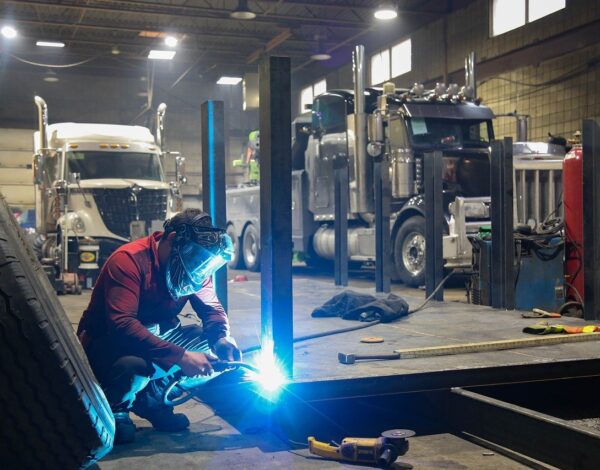
28
Thu
Brazing Unveiled: A Peek into the Science and Technique
Brazing, a metal-joining process that involves the use of a filler metal with a ...

18
Mon
Understanding Cylinder Regulators: When and Why You Should Replace Them
Cylinder regulators are essential tools in many industries, from welding to medi...
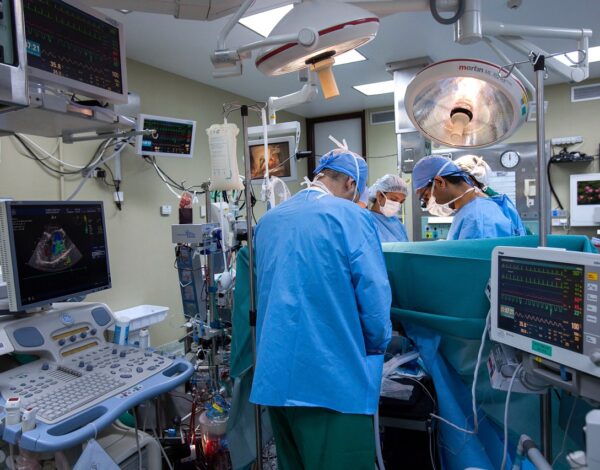
11
Mon
The Rising Role of Argon in the Medical Industry
Argon, a noble gas, is becoming increasingly significant in the medical field, d...
